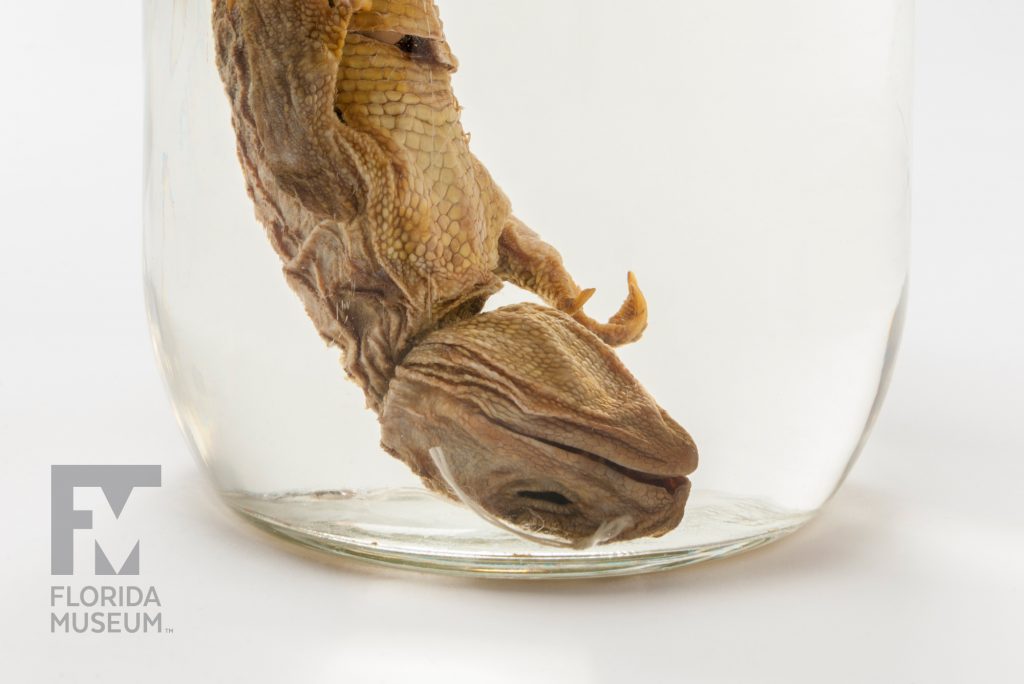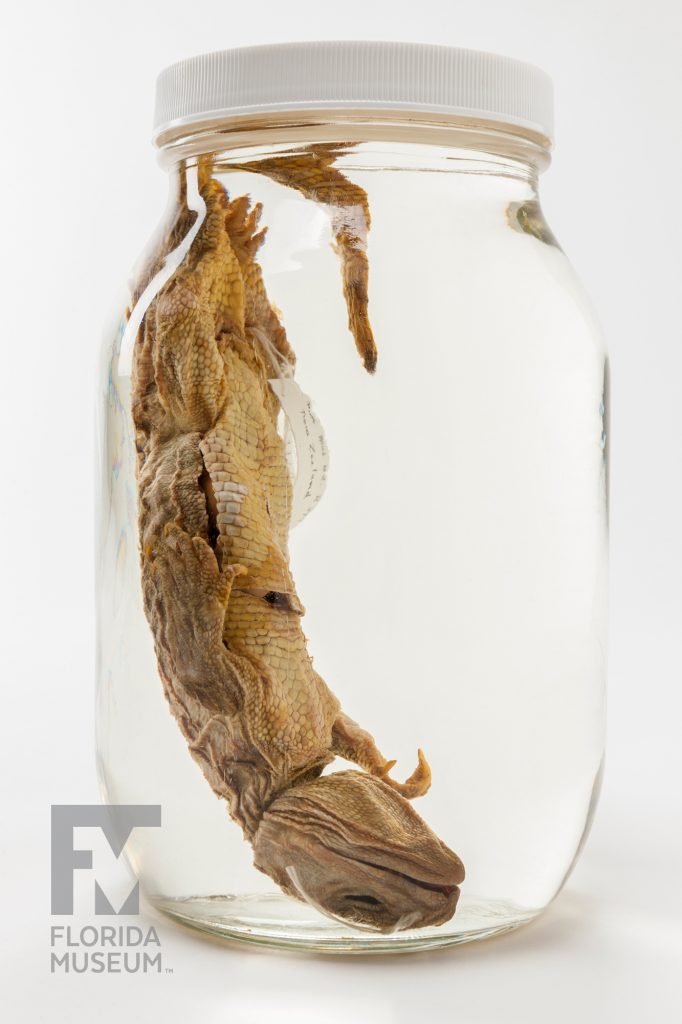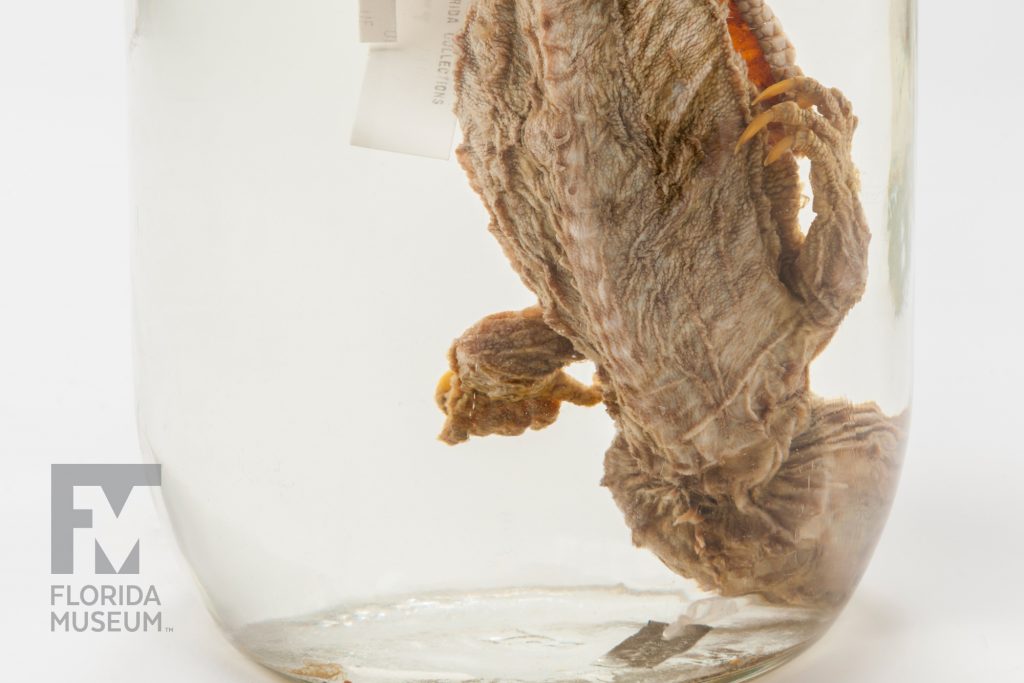This single surviving species of a 200-million-year-old lineage is a very rare relative to lizards and snakes. Museum specimens are even rarer, and not well studied for fear of destroying the object. CT scanning allows scientists to study and share anatomy without harming the specimen.
Summary
Tuatara (Sphenodon punctatus)
From New Zealand
Collection
Story
This is a Tuatara, a rare and very unusual reptile from New Zealand. The species is the sole living descendant of a lineage of animals that has existed since the Triassic— over 225 million years ago. Like many collections, the herpetology department at the Florida Museum of Natural History contains very little Tuatara material: only one skull and one whole preserved specimen. Because they are so rare, and so important, these specimens are never loaned out, and so, until recently, access to them has been limited to those researchers that could visit our collections. It’s a Catch-22 that all collections face: the more rare and important a specimen is, the fewer researchers there are that will have access to it. But new technology is rapidly changing this.
X-ray microcomputed tomography is an imaging technique that produces very high resolution, three-dimensional representations of nonliving objects, essentially 3-D X-rays. By scanning our Tuatara specimens at the University of Florida we have been able to create digital versions of their skeletons, which can be viewed on a computer or turned back into physical objects using 3-D printing. We have made these and many other scans available online, meaning that previously inaccessible specimens are now freely and instantaneously available to view and download all over the world by researchers, educators and anyone interested in finding out more about these remarkable animals. Feel free to check them out for yourself!
Edward Stanley
Postdoctoral Researcher, Herpetology*
Florida Museum of Natural History
Additional Information
Explore: Download digital media of CT scanned specimen from MorphoSource.org
Exhibit
On display Sept. 23, 2017-Jan. 7, 2018, Rare, Beautiful & Fascinating: 100 Years @FloridaMuseum celebrated the Museum’s rich history. Each Museum collection was asked to contribute its most interesting items and share the stories that make them special. Though the physical exhibit is closed, this companion website remains online, providing an opportunity to experience the Florida Museum’s most treasured specimens.
Exhibit Area: Looking Ahead
Theme: Digital Data
 Want to see more? Explore more than 300 breathtaking color photos of plants, animals, fossils and cultural heritage materials from the Florida Museum of Natural History’s collections in the award-winning book All Things Beautiful available from the University Press of Florida.
Want to see more? Explore more than 300 breathtaking color photos of plants, animals, fossils and cultural heritage materials from the Florida Museum of Natural History’s collections in the award-winning book All Things Beautiful available from the University Press of Florida.
*This title was accurate at the time the exhibit was on display in 2017. Please visit the collection website to verify current staff and student information.



